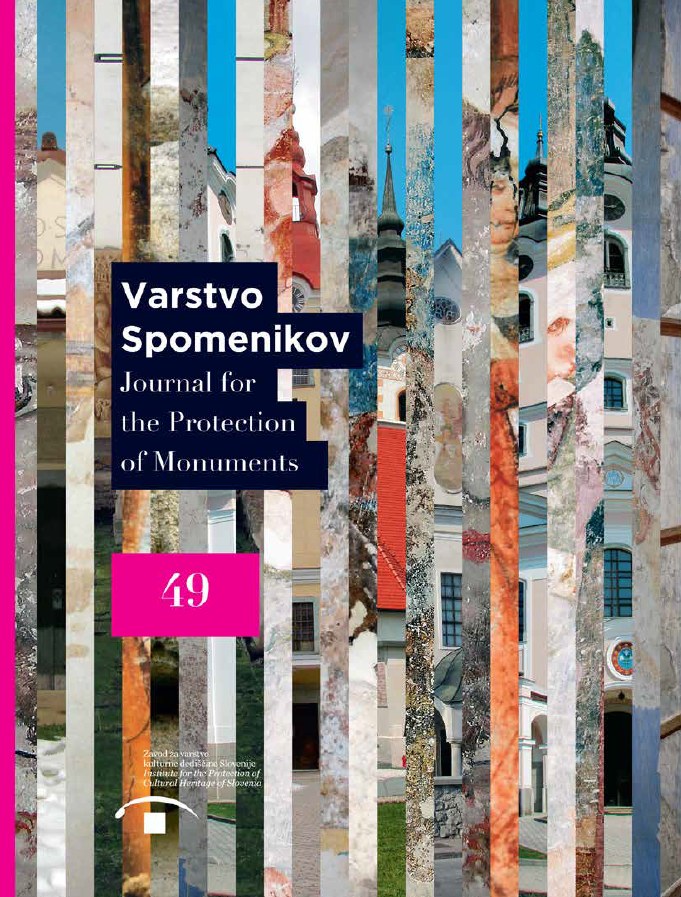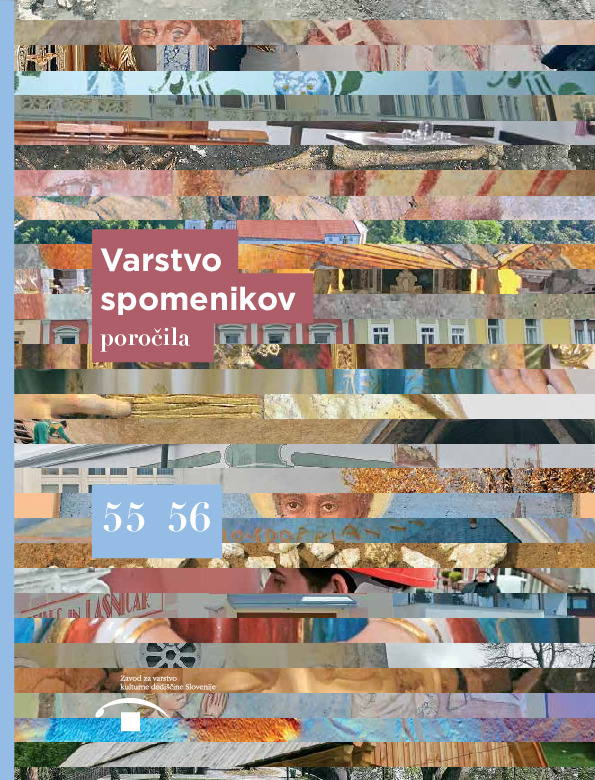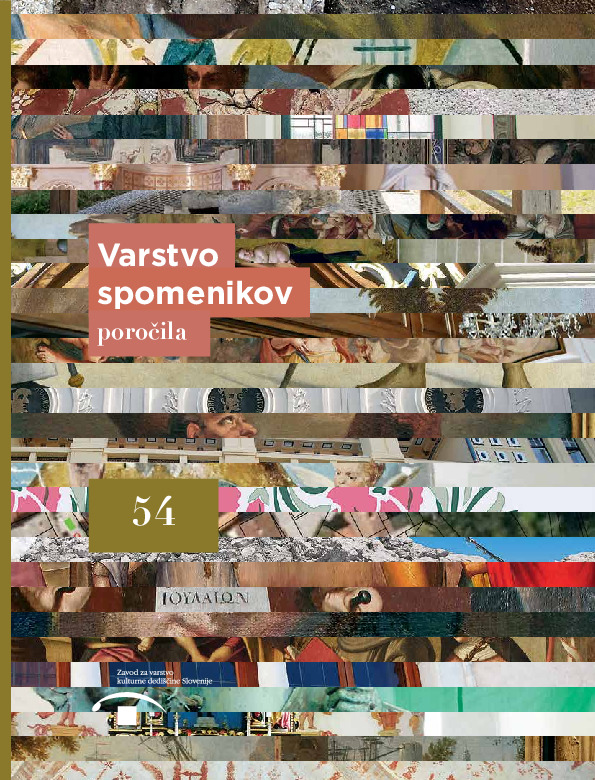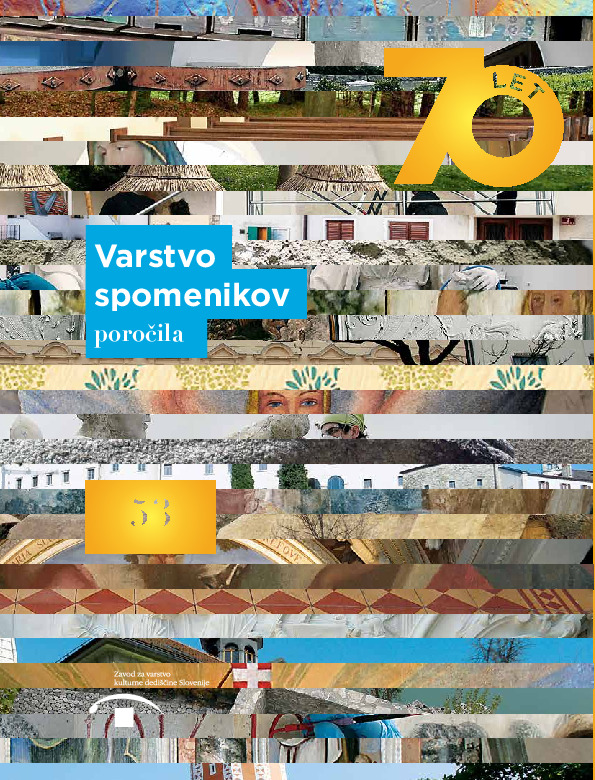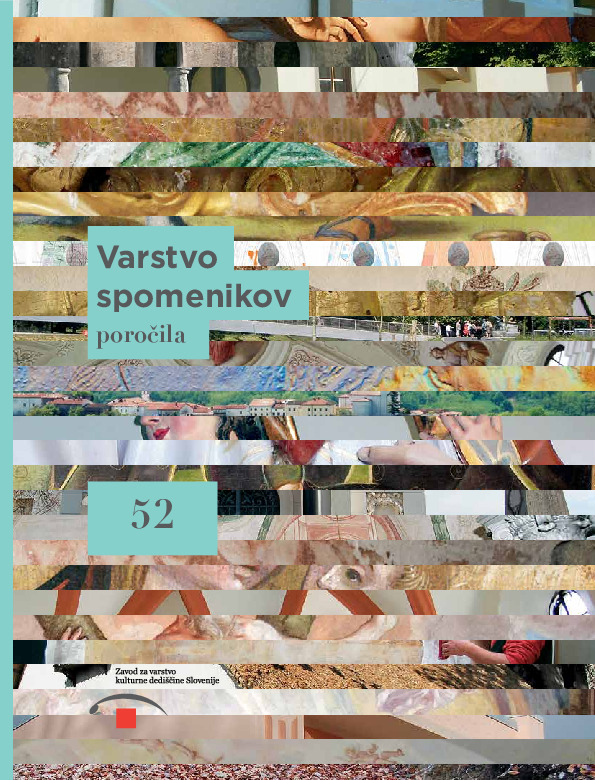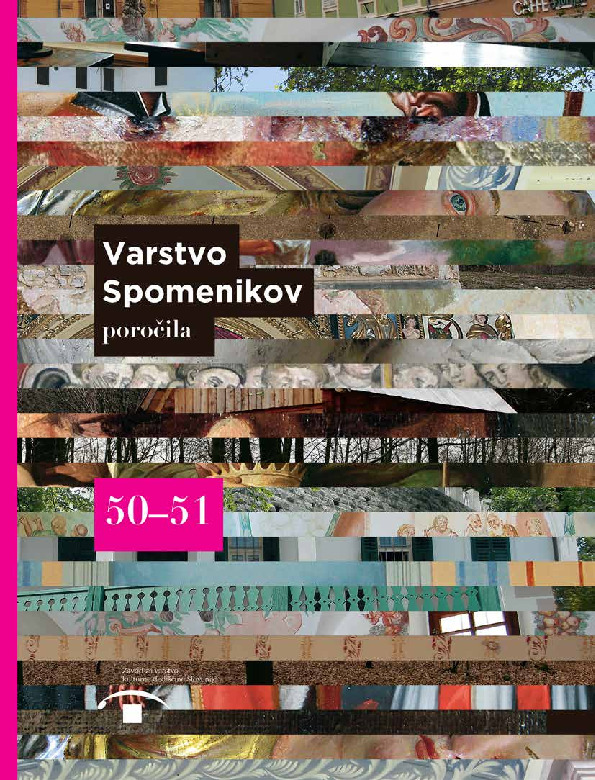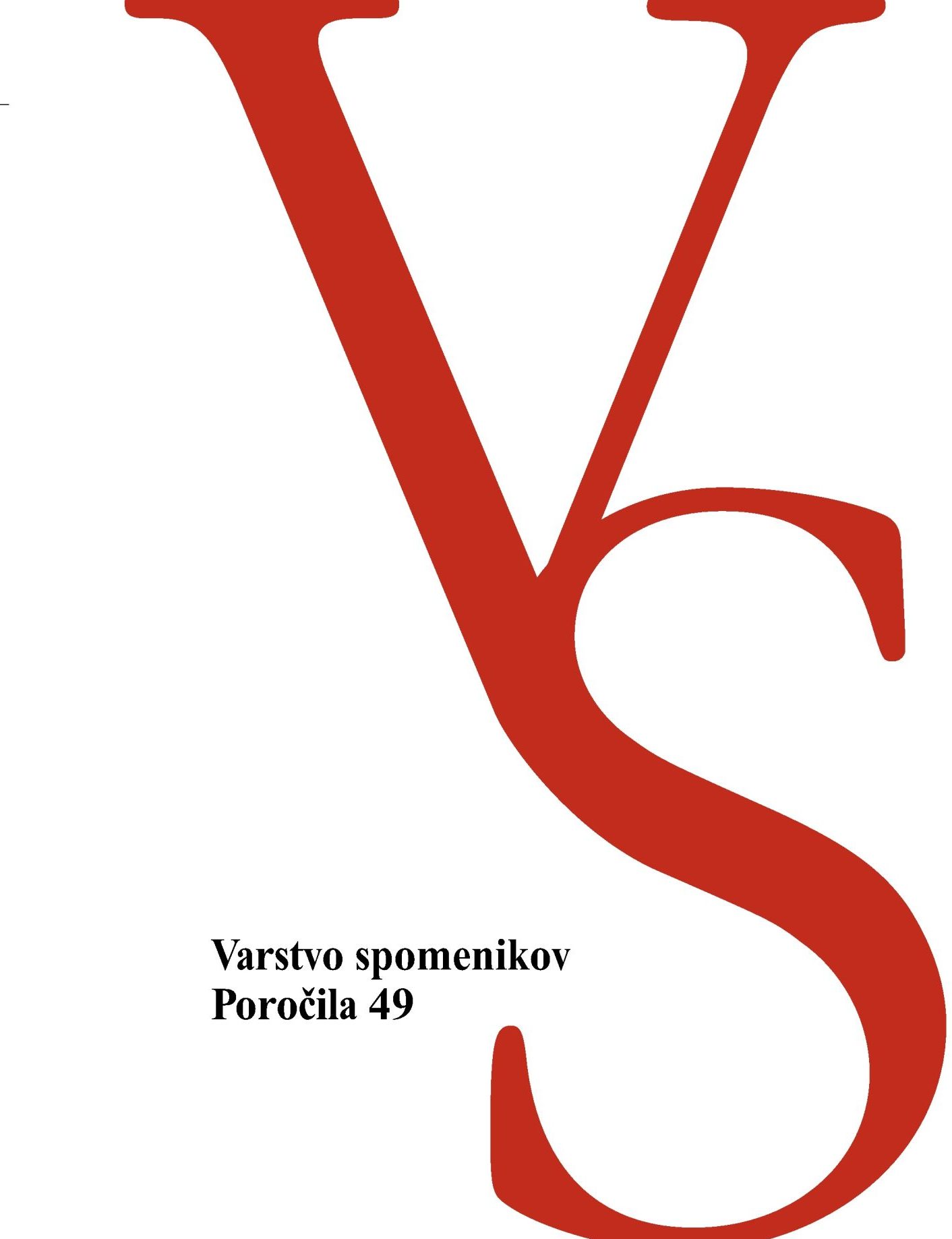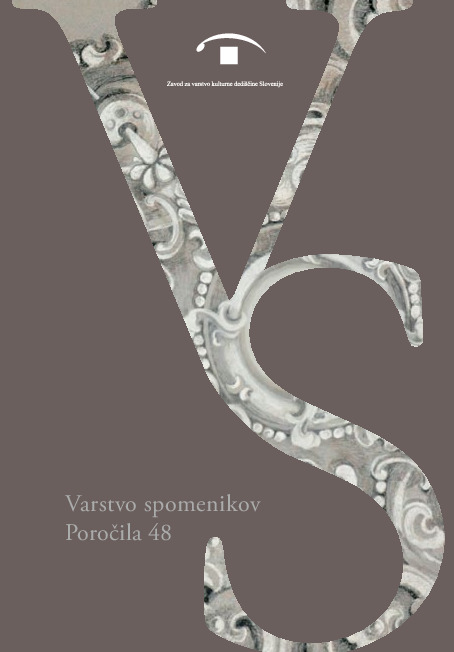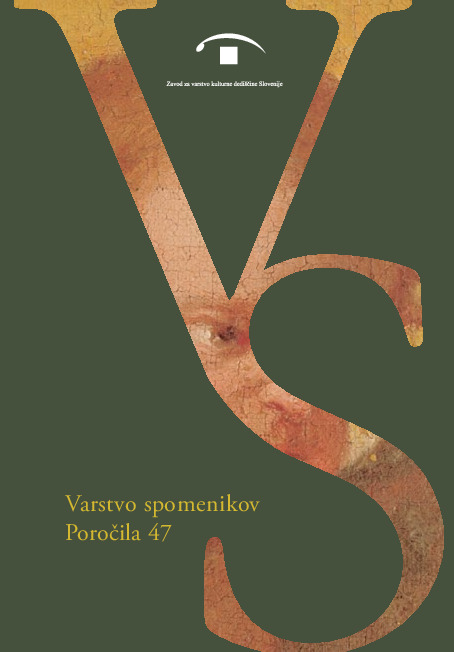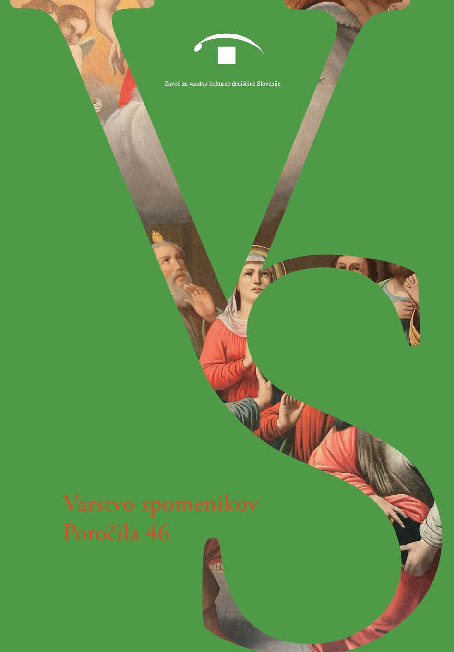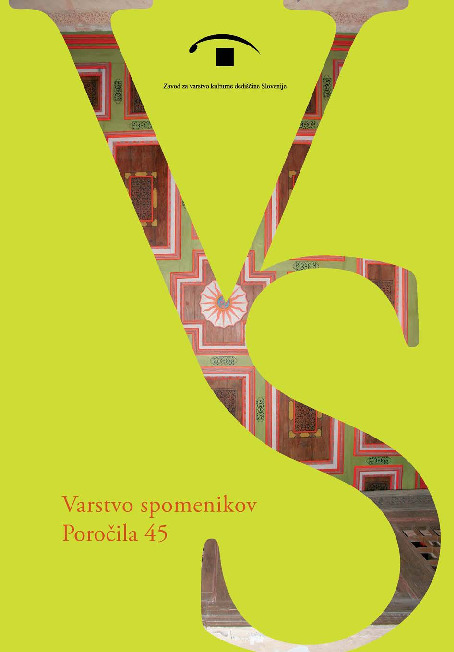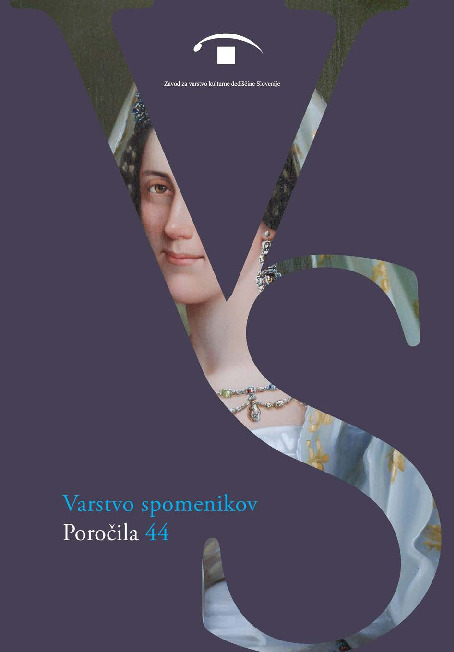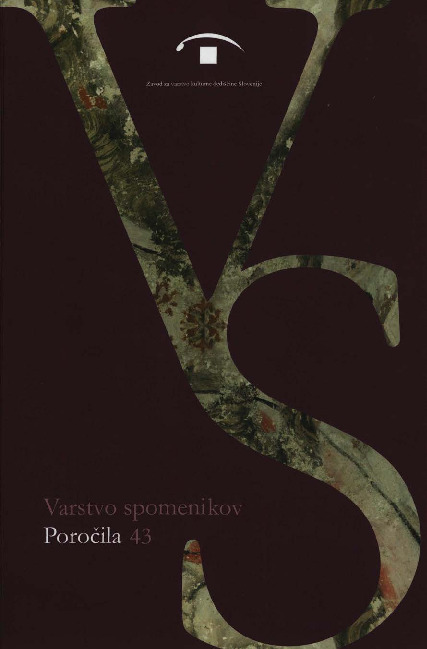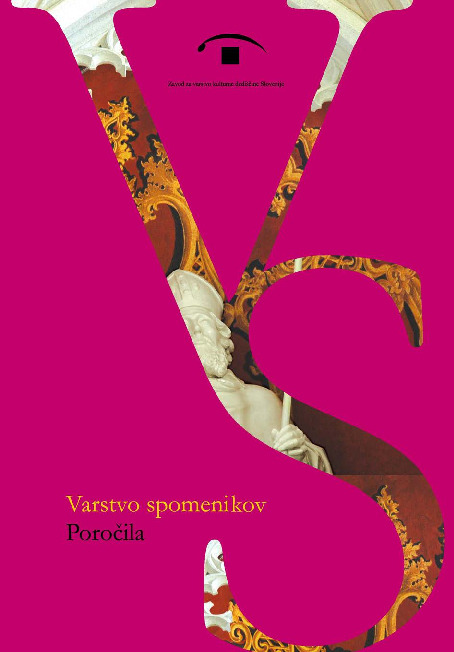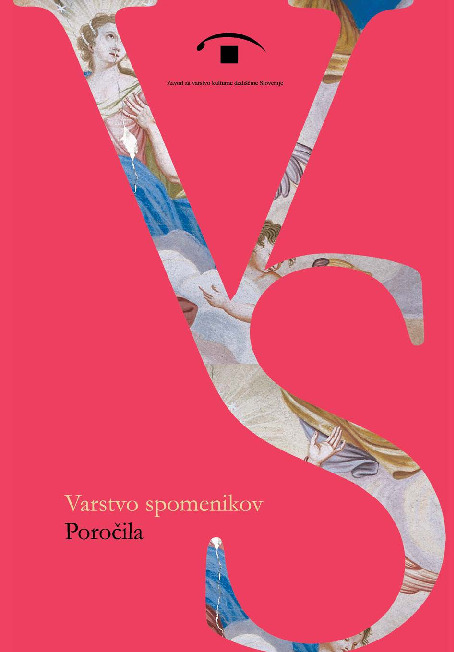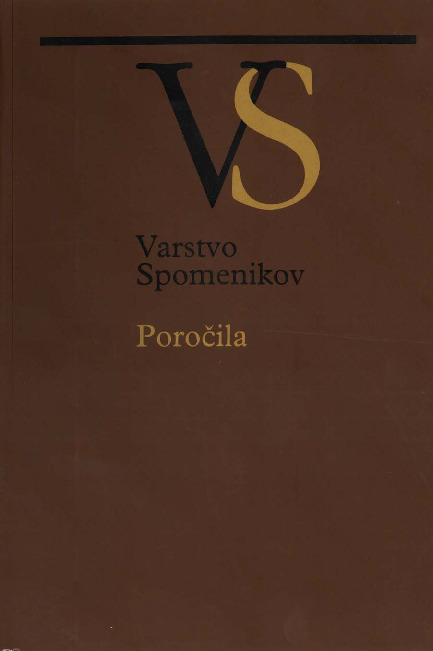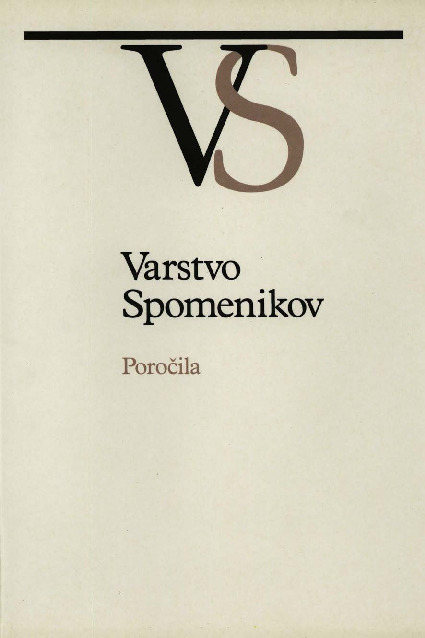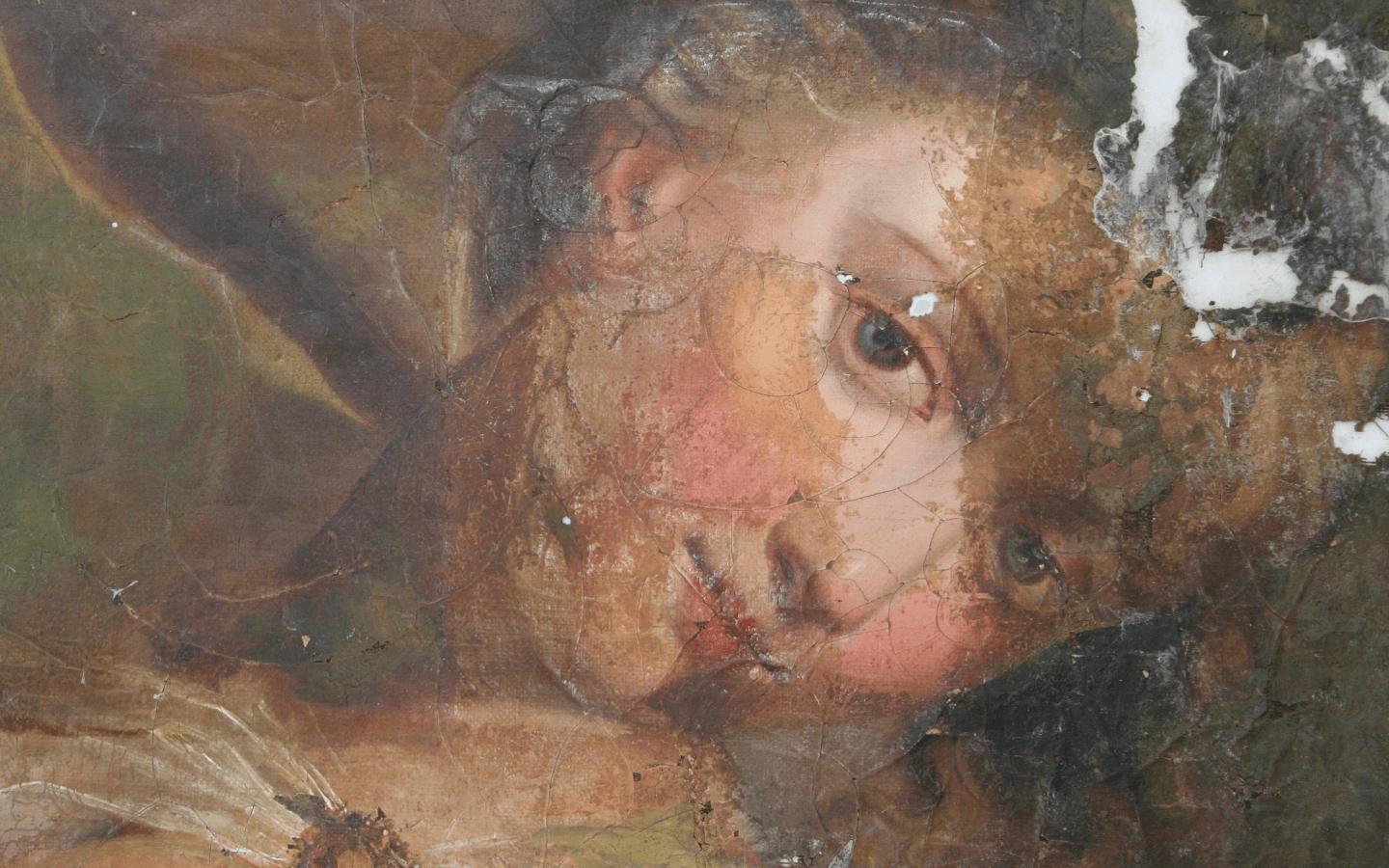
Protection of monuments, reports
Protection of Monuments, Reports is the main journal of the Institute for the Protection of Cultural Heritage of Slovenia for the theory and practice of the protection and conservation of immovable cultural heritage.
The publication provides an overview of the state of Slovenia's heritage, outlines its analyses and research, and describes the interventions that have been carried out on the heritage in order to preserve it for the present and future generations, or for the future.
The publication contains reports on conservation interventions on cultural heritage sites in Slovenia in each year.
The Reports have been published since 1946, initially as part of the journal Monument Protection, and since 1998 as a stand-alone publication.
Editorial address
Institute for the Protection of Cultural Heritage of Slovenia
Monument Protection, Reports - Editorial
Poljanska cesta 40
SI-1000 Ljubljana
Editor: Biserka Ribnikar Vasle, biserka.ribnikar@zvkds.si
Instructions to authors on how to write reports
A brief introduction describing the monument or heritage site, settlement, location, object, object, landscape.
Brief description of the situation of the facility in question: the reasons and the intended objectives which led to the intervention you are presenting.
- Description of conservation procedures
- Programme,
- working methodology,
- documentation and research,
- presentation of results and new findings and conclusions,
- interpretation and presentation,
- you can combine the results and conclusions.
- For conservation and restoration work, it is important to specify the exact technology and materials used,
- more attention should be paid to new techniques, methodologies or new research procedures.
- Assessment of the success of conservation interventions, with reference to individual experts and contractors.
- Indicate the exact captions of the image attachments (short caption and author of the photograph or drawing) with consecutive numbers. Then store the image attachments in the folder with the name of the settlement, the monument and the ESD, with the corresponding numbers (see Technical Instructions).
- Signature of the conservator (name and surname).
Cite the references in the body of the text, with the full citation in brackets.
Comments should not be substantive.
Technical Instruction
Please fill in the header of the report from the Register of Immovable Cultural Heritage (Ministry of Culture), http://rkd.situla.org/
ESD:
Settlement:
Municipality:
Name:
Title:
Scope:
Period:
The following report should be written in Word, in Ariel font size 12; do not format the text. As the reports in the book are in alphabetical order, each report should be saved in its own Word document. The text should normally be no more than two pages (60 lines), except that three pages (90 lines) are acceptable in cases of major finds and new discoveries. For more substantial reports, annexes are recommended and desirable
Pictorial annexes
In addition to pictures and photographs, pictorial material includes tables, graphs, plans, maps and charts.
The lines on the tables should not be thinner than 0,2 mm, and if the original has to be reduced in size, the lines should be at least 0,3 mm thick. Drawings, sketches and tables should be accompanied by a drawn scale of measurement (not M = 1 : 1). The margins of the tables should be 0,5 mm thick, with the author's name and the number of the table (author, number of the table, figure) clearly written outside the margins.
Images and other material (slides, black and white photographs) must not exceed 13 x 18 cm. Each image should be captioned with the name of the photographer.
Images in digital format should be submitted in A5 format with a resolution of 350 DPI, in JPEG (highest quality) or TIFF file format. File names should not contain alphabetic characters.
Do not add images in electronic format between the text.
Do not send the images by email, but burn them on a CD-ROM.
Attach a printout of the image and/or table files to the CD-ROM. Please also write the name of the file clearly below the printout.
Limit yourself to pictorial material of exceptional finds or pictorial annexes that add significantly to the content of the report. For monuments of national importance and technically very complex interventions, include pre- and post-impact images; it is recommended to show the entire course of the intervention.
Only reports that follow these guidelines will be published.
Index of abbreviations (field)
A - Archaeology
E - Ethnology
R - Restoration
U - Urban planning
UA - History of art
UR. KR. - Landscaping
T - technique
Z - history
Distribution of the magazine: IPCHS Development Service
